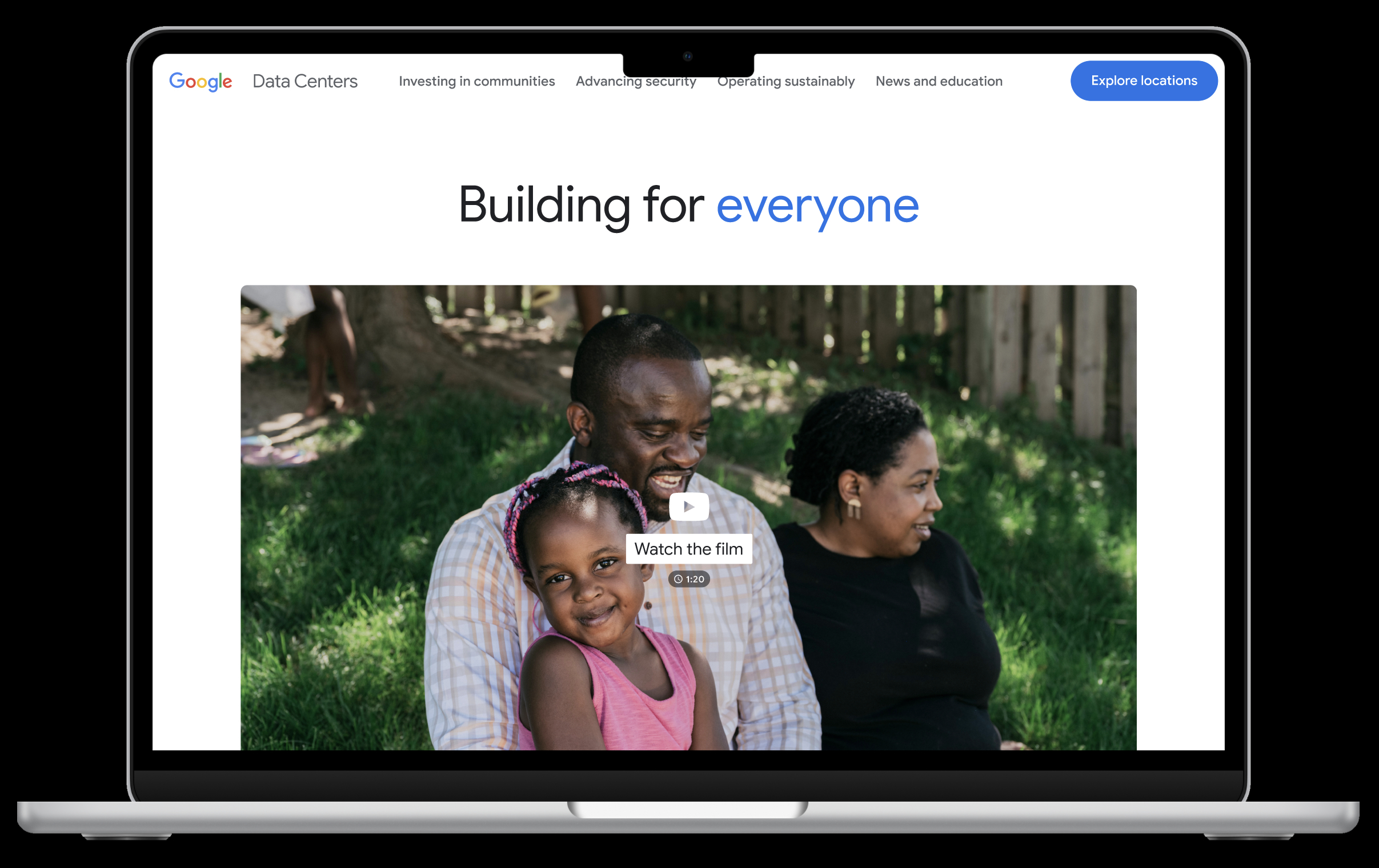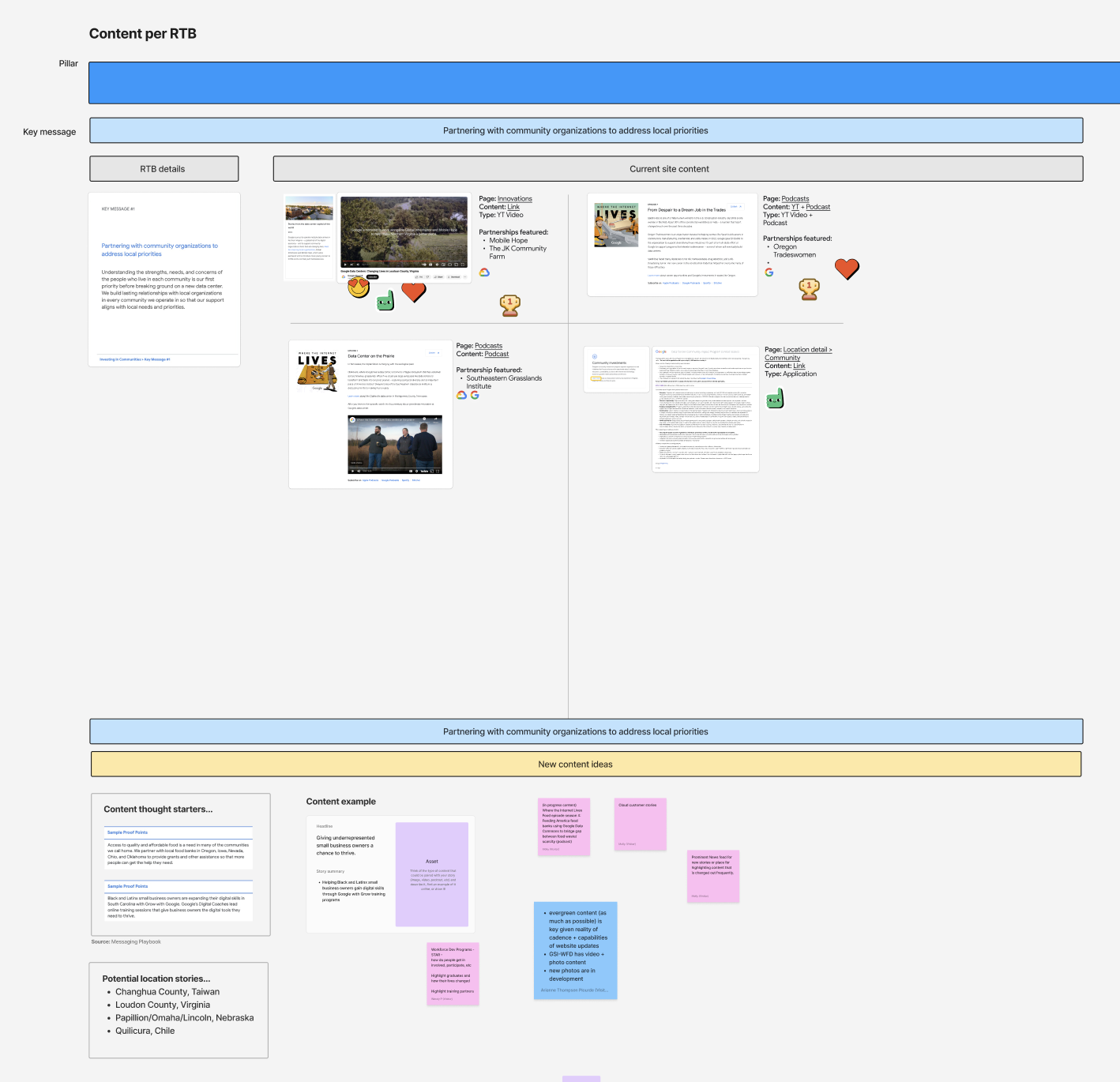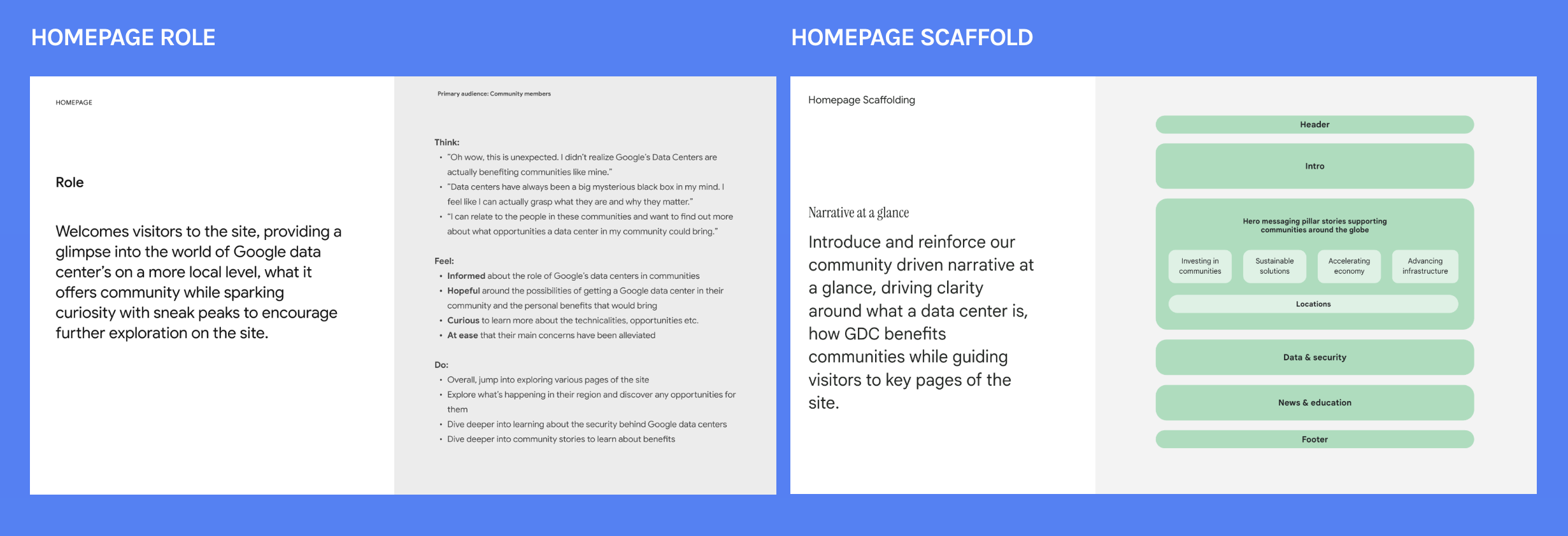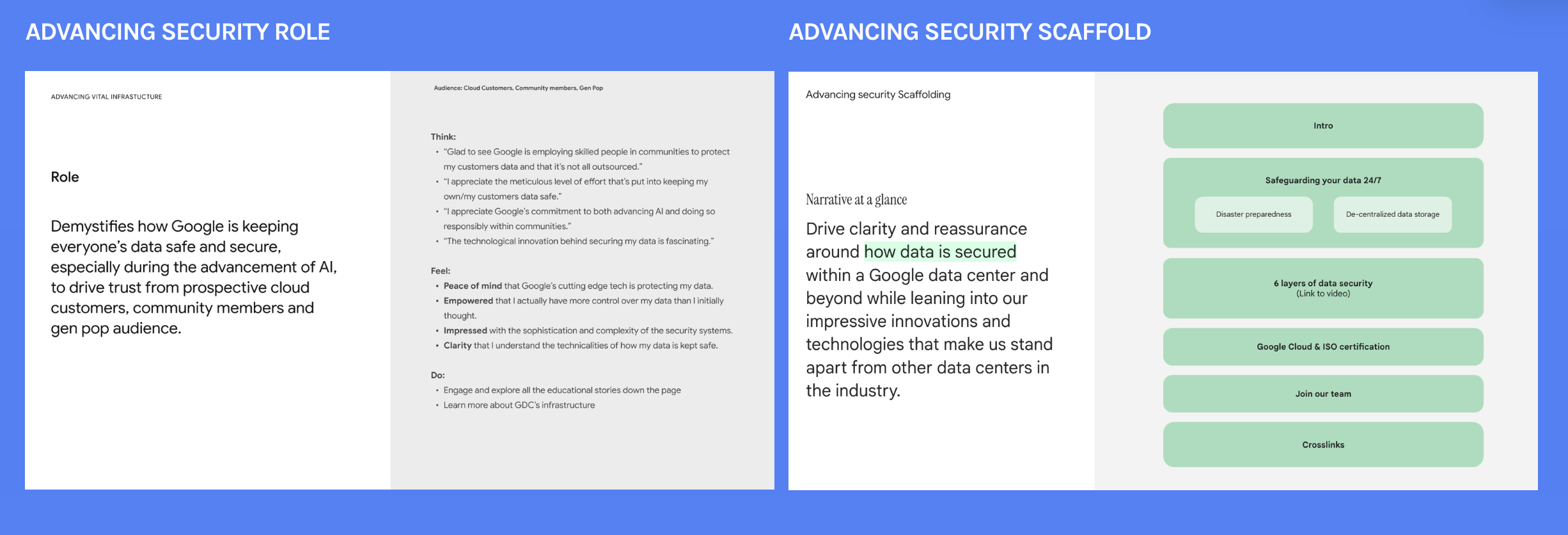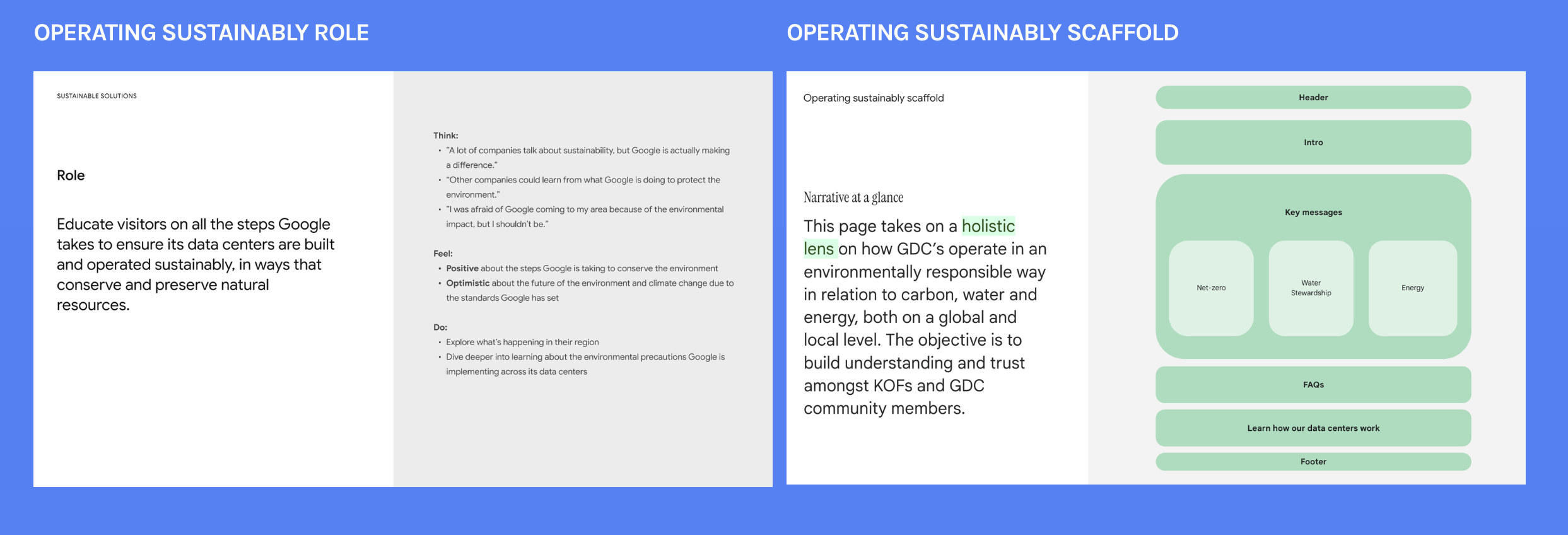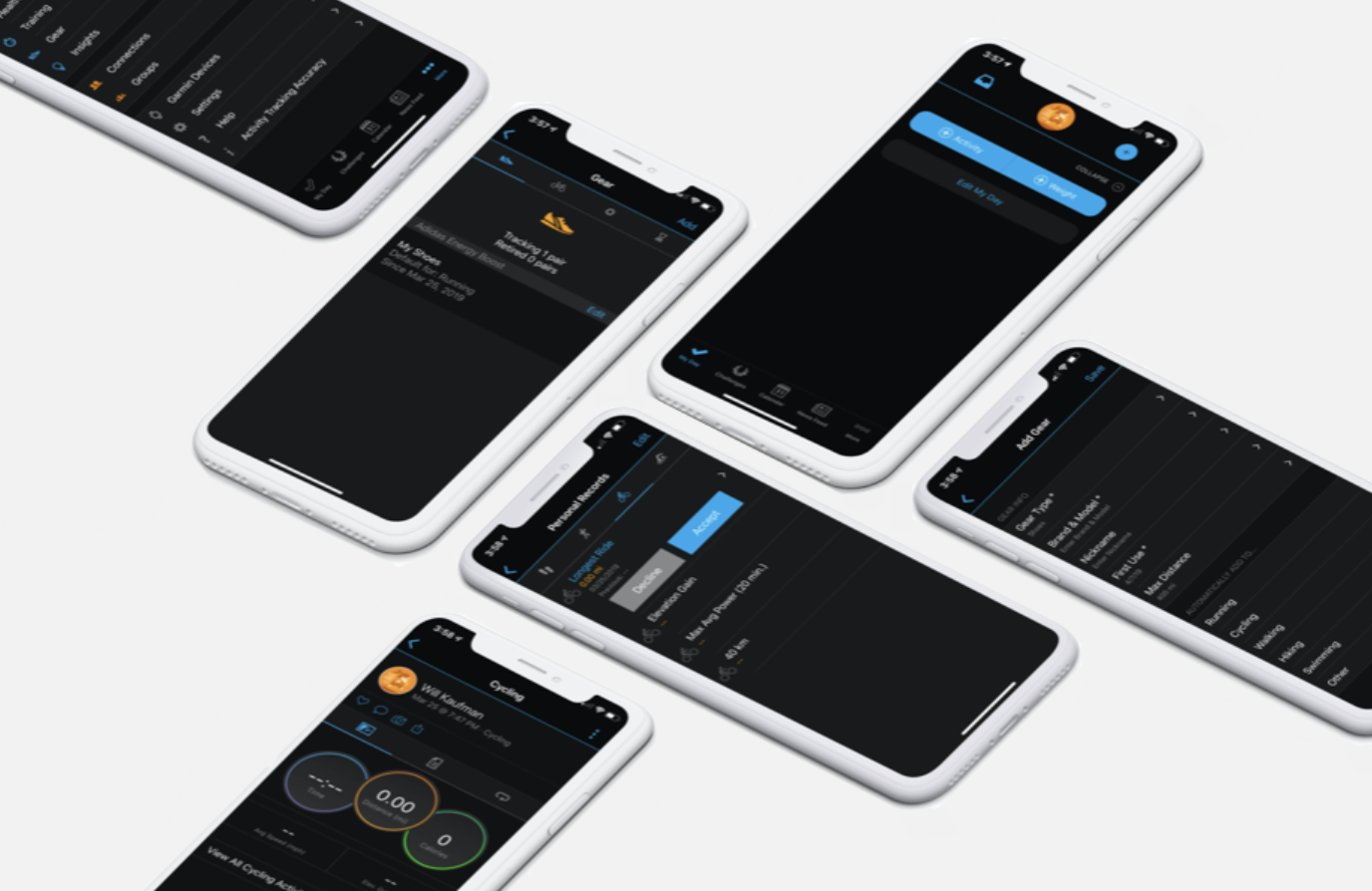Google Data Centers
Role → UX Strategist
Timeline →July - October 2024
Agency → Instrument
Client → Google
01
Project Overview 🔍
Ask
Create a dynamic website that tells our audience why Google data centers matter and how they benefit our communities - through stories, simple and engaging content, and our strategic pillars.
Timeline
This was a longer project that involved an end-to-end multi-disciplinary process. At a high-level, we had six main phases:
Kickoff & Immersion
Strategic Approach
UX & Design Concepting
Detailed Design
Development & CMS integration
Final Handoff
Role & Responsibilities
Due to the length and nature of this project, we had a larger delivery team consisted of a strategy lead and a ux design strategist (me), a visual designer and a design director, two developers and a copywriter. I worked in close collaboration with the entire team through the project process.
Co-led the strategic approach phase
Co-led the ux strategy and detailed design and concepting phases
Supported writers and developers through the development and CMS integration phases
02
The Audience 👥
This site was created for a range of audiences who each have a unique vested interest in Google’s data centers (GDCs). To simplify our process, we bucketed our audiences into four main categories according to their priority.
Across all audiences, we observed the following shared concerns and misperceptions that they have about GDCs:
Concerns about community impact
Concerns about air and noise pollution, disruption of local landscapes, limited jobs, and lack of community involvement and its effect on residents.
Skepticism about economic effects
Skepticism regarding transient workers increasing cost of living, lost revenue from tax incentives and inability to support community growth.
Fears about environmental issues
Fears over energy and water consumption and how DC’s negatively affect the environment both locally and globally.
Distrust around privacy & security
The vast quantity of data stored raises concerns about potential privacy violations and data breaches.
03
The Opportunity 💡
To address these user concerns and misperceptions, we elevated GDCs messaging pillars to tell their story across the site.
Concerns about community impact
↓
Investing in communities
Collaborating with each community to provide long-term support through grands, educational programs, and other initiatives.
Skepticism about economic effects
↓
Accelerating the economy
Bringing more economic activity, new businesses, and growth opportunities to the communities we call home.
Fears about environmental issues
↓
Innovating sustainable solutions
Driving advancements in sustainability every day by accelerating the clean energy transition, continually improving efficiency, and preserving critical natural resources.
Distrust around privacy & security
↓
Advancing vital infrastructure
Building the necessary infrastructure of tomorrow to support connection, digitization, and prosperity.
Our approach was to bring the messaging pillars front and center to organize content and guide storytelling as well as infuse a narrative of positive community impact throughout the website.
While also using the following principles to help guide the ux and design:
Highlight community voices through photography, storytelling, quotes
Show the numbers putting proof points behind any claims we make with stats and figures demonstrating impact
Celebrate each location by elevating their story throughout and making community specific details easily accessible
04
Site Goals ⭐️
Northstar
To drive trust, curiosity, and immediate understanding around why Google Data Centers matter to communities and the value they bring on a more human scale.
Website goals
As GDC’s website is centered on community, the following goals outline how we’ll serve them:
Build trust by authentically addressing community concerns and show how we’re mitigating them with real stories representing clear benefits.
Spark a sense of awe by pulling back the curtain on an otherwise “secret” topic and make learning about Data Center’s fun and interesting.
Foster engagement by making it easy to discover stories, programs, trainings, jobs etc.
Create a resource that audiences will come back to for community updates or latest tech innovations.
05
Navigation / IA 🏁
The information architecture we created is catered to community members and KOF’s, accommodating their many different mindsets and actions they’ll want to take while on the site.
Understand the impact of GDC on community and environment
Learn about the foundations of GDC’s and how they operate
Discover how Google can help them on a local level (grants, programs, trainings)
Apply for jobs, programs, trainings
Explore what’s happening in their community
Stay informed about the latest news and developments
Main NavigationThis section lays out the benefits of data centers at a high-level. The main nav label intentionally references ‘communities.’
This section speaks to privacy & data security.
This section provides information about how GDC’s operate in an environmentally responsible way.
This section provides more information about data centers and how they work as well as housing news and key content series.
This section provides access to all data center locations and detailed pages for each.
FooterProvides easy access to engage with GDC, exposing tertiary pages on the site
Exposes some pages not visible in main or secondary nav
Provides entry points to the environmental and impact reports
Cross-links to relevant Google initiatives

